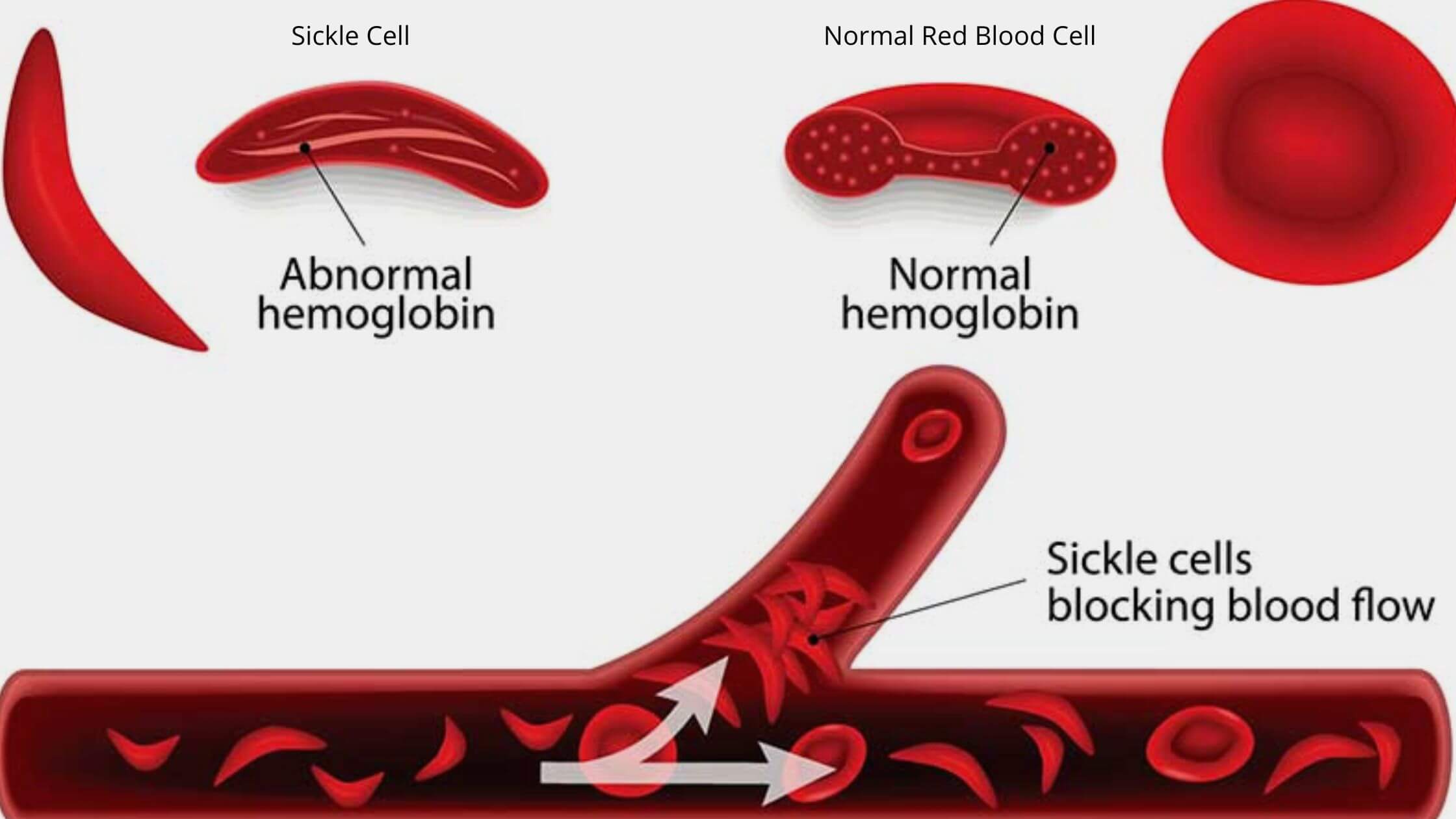Sickle Cell Disease: Early Signs Of Fatigue And Shortness Of Breath
Nikki Attkisson | Last Updated : August 24, 2022Sickle cell disease is a group of inherited red blood cell disorders characterized by an abnormality in hemoglobin, the molecule that carries oxygen through the body.
The abnormal hemoglobin causes the red blood cells to deform into a sickle shape, making them sticky and rigid, leading to organ damage, pain, and infections.
It’s caused by a change in hemoglobin—a protein found in red blood cells that contains iron and gives them their color—from the normal A-type form to one of two abnormal types: S-type or C-type.
The sickle cell version is known as sickle cell anemia. Hemoglobin S (HbS) has a valine amino acid at position six of its beta chain instead of glutamic acid (the HbA type).
This amino acid substitution causes hemoglobin to polymerize faster than usual, forming insoluble fibers called ‘sickledex’.
Symptoms Of Sickle Cell Disease
Sickle cell disease is a disease that impacts the blood, and it can cause a multitude of symptoms depending on the severity of the case. When people are born with this disease, they inherit it from their parents, just like any other genetic trait.
However, sickle cell disease is not usually inherited by both parents. Only one parent must carry a copy of the mutated gene for their children to have this condition. If both parents are carriers, each child has a 25% chance of having sickle cell disease; if only one parent is a carrier, there is a 50% chance of getting the disease.

Most people with this disease are of African descent, but individuals from other ethnic groups can also be affected by it. The mutation that causes the disease was found in people who lived in Central Africa and India before being spread worldwide by human migration.
The first signs that an individual is at risk for developing symptoms include:
- Coughing
- Fever
- Anemia
- Leg pain
The end stages of sickle cell disease can cause complications such as stroke, heart attack, and organ failure. The most common symptoms include:
- Fatigue
- Headache
- Chronic pain (especially in hands and feet)
Treatments
The shape of the cells results in them being unable to carry oxygen through the body properly. This can result in pain, organ damage, stroke, and early death. That doesn’t mean there are no treatments for sickle cell anemia. It’s not yet possible to cure SCD, but several treatment options are available with varying degrees of effectiveness.
More From Powdersville Post:
🔵Anemia: What Is the Best Diet To Increase Hemoglobin Levels?
🔵Chronic Kidney Diseases: 7 Symptoms That Tell Your Kidney Is In Danger
Hydroxyurea
Hydroxyurea is a medication that’s been proven effective at suppressing the clinical symptoms of SCD in adults. It works by breaking apart the deformed hemoglobin molecules inside red blood cells and replacing them with healthy ones that aren’t as stiff. Studies have shown hydroxyurea to be effective at reducing pain and frequency of infections, increasing oxygen levels within the body, and slowing down disease progression in those who are already experiencing complications from SCD. However, it can also cause anemia, nausea, and vomiting.
Bone marrow transplants
A bone marrow or stem cell transplant involves replacing damaged or diseased bone marrow with healthy stem cells taken from another donor or harvesting stem cells from a patient’s blood, which is then injected into the body.
Bone marrow transplants have successfully treated other blood disorders, such as leukemia and some types of lymphoma.
Pain medications
Pain medication is sometimes recommended for people who have sickle-cell disease. Medications may help reduce pain and help keep the person comfortable. Medications that are often prescribed include acetaminophen (Tylenol), ibuprofen (Advil, Motrin), and naproxen (Aleve). Acetaminophen is generally safe for children under 12 years old but should not be taken by anyone younger than 6 months old.
Ibuprofen is only appropriate for adults older than 18 years old. Naproxen is only appropriate for those over 2 years old.
References:
🔵National Library Of Medicine(n.d)Fatigue in Adolescents and Young Adults with Sickle Cell Disease: Biological and Behavioral Correlates and Health-Related Quality of Life(Available Online): https://www.ncbi.nlm.nih.gov/pmc/articles/PMC3982311/
🔵Centers For Disease Control And Prevention(n.d)Complications of Sickle Cell Disease(Available Online): https://www.cdc.gov/ncbddd/sicklecell/complications.html
With over 15 years as a practicing journalist, Nikki Attkisson found herself at Powdersville Post now after working at several other publications. She is an award-winning journalist with an entrepreneurial spirit and worked as a journalist covering technology, innovation, environmental issues, politics, health etc. Nikki Attkisson has also worked on product development, content strategy, and editorial management for numerous media companies. She began her career at local news stations and worked as a reporter in national newspapers.
